Dachshund Dog Breed
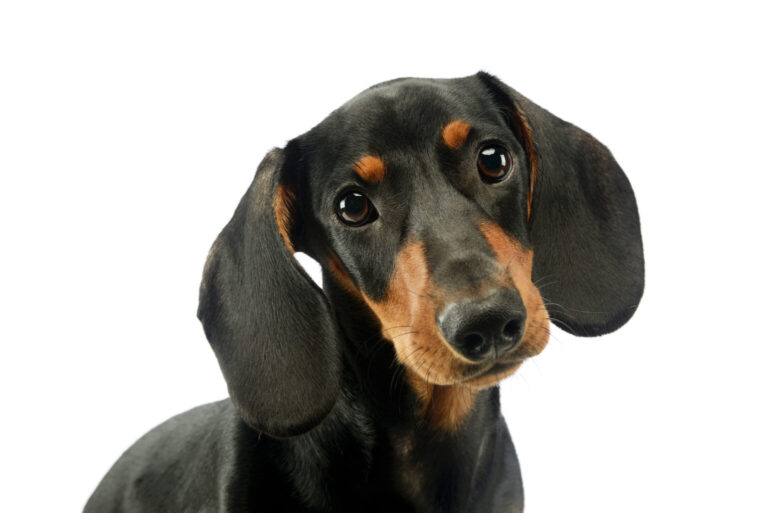
| Feature | Detail |
|---|---|
| Country of Origin | Germany |
| Birth Era | 15th-16th Century |
| Crossbreeding Status | Purebred |
| Temperament | Playful, Curious, Tenacious |
| Physique | Long-bodied, Short-legged, Muscular |
| Hair Quality | Smooth, Long-haired, or Wire-haired |
| Lifespan | 12-16 years |
Dachshunds, with their unique and charming appearance, stand out in the world of dog breeds. Originating from Germany, these small yet courageous dogs were originally bred for hunting. Today, they are beloved for their playful and affectionate nature, making them excellent companions. Characterized by a long body and short legs, Dachshunds come in different coat types – smooth, long-haired, and wire-haired – each with its own grooming needs. Despite their small size, they have a big personality: they are curious, lively, and sometimes stubborn. This breed requires regular exercise and mental stimulation to keep them happy and healthy. With a lifespan of 12 to 16 years, a Dachshund can be a long-term, loving member of any family, provided they receive proper care and attention.
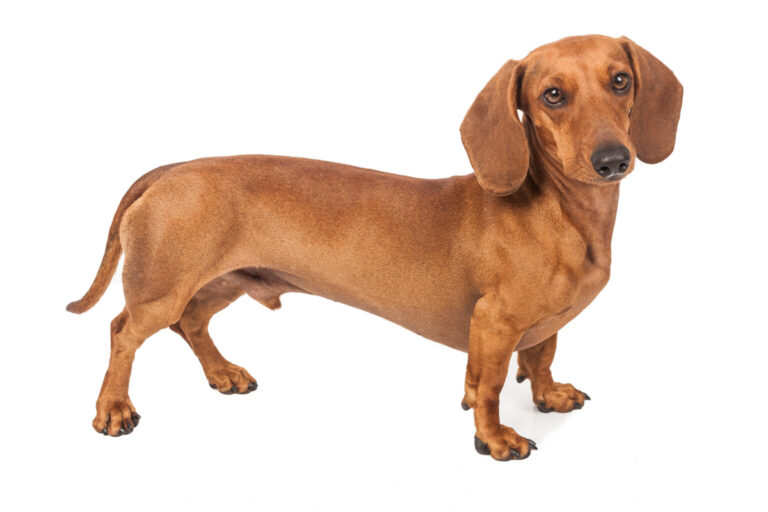
In Japan, the Dachshund is appreciated for its unique characteristics, reflecting the Japanese admiration for both tradition and innovation in pet breeds.
Coat Color
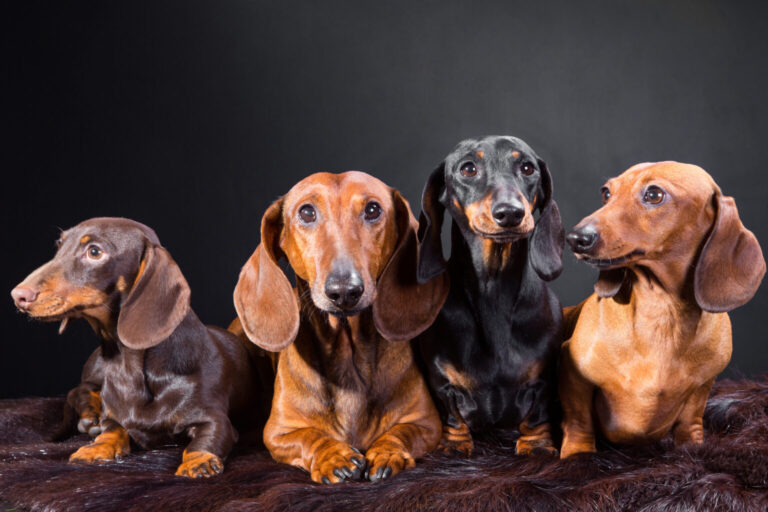
Dachshunds exhibit a remarkable range of coat colors, which not only adds to their visual appeal but also serves as a marker of their diverse genetics. These colors include solid shades like black, chocolate, and red, and unique patterns like dapple, brindle, and piebald. Each color and pattern carries its own genetic implications and potential health considerations. For instance, the dapple Dachshunds, known for their speckled coat, are particularly sought after but require careful breeding practices to avoid genetic health issues. The color of their coat can also influence their grooming needs, as some colors may show dirt and shedding more than others.

In Japan, the variety in coat colors of Dachshunds is often seen as a reflection of the country’s appreciation for diversity and harmony in nature.
Coat Type
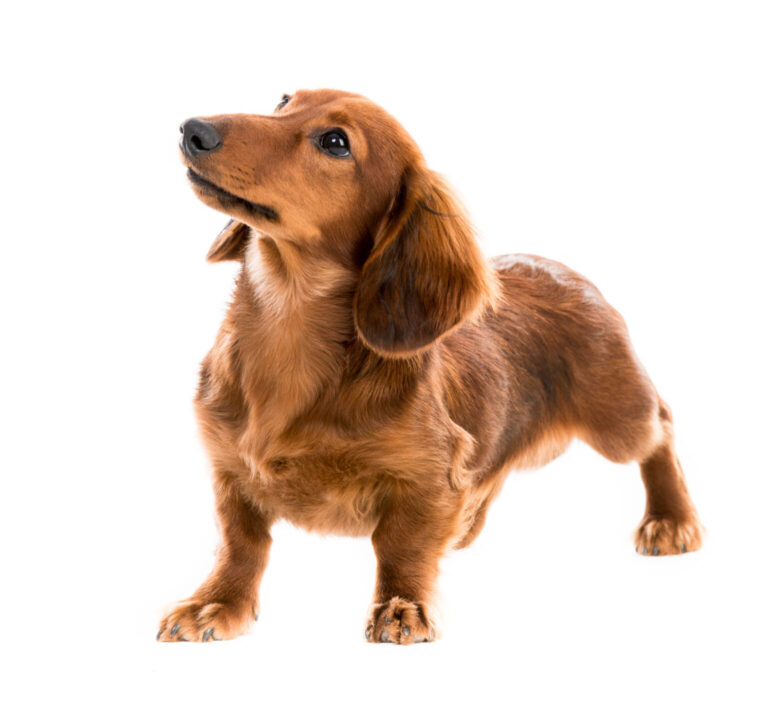
The Dachshund’s coat type significantly affects its grooming requirements and aesthetic appeal. The three types are smooth, long-haired, and wire-haired. Smooth-coated Dachshunds have a sleek, shiny coat that is easy to maintain, needing only occasional brushing and bathing. Long-haired Dachshunds, with their elegant, flowing fur, require more frequent grooming to keep their coats free from mats and tangles.
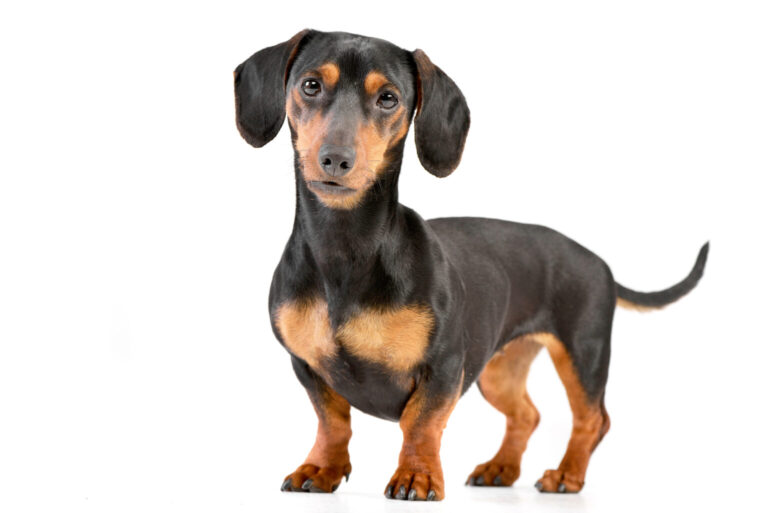
The wire-haired variety, distinguished by their rough, thick coat, needs regular grooming sessions including brushing and professional trimming to maintain their distinct appearance. These varied coat types cater to different owner preferences and lifestyles, making the Dachshund a versatile breed in terms of grooming and aesthetic.
Size
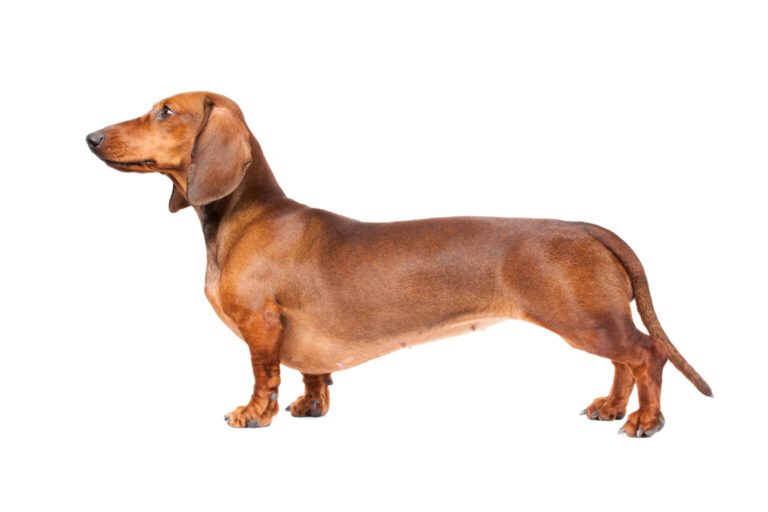
Dachshunds are small-sized dogs but their size can vary between the two main categories: standard and miniature. Standard Dachshunds, the larger of the two, weigh between 16 to 32 pounds and stand about 8 to 9 inches tall at the shoulder. Miniature Dachshunds, being smaller, typically weigh under 11 pounds and measure about 5 to 6 inches in height. Their compact size makes them suitable for various living conditions, including apartments. However, their unique body shape, characterized by a long spine and short legs, necessitates careful handling to prevent injuries, particularly to their back.
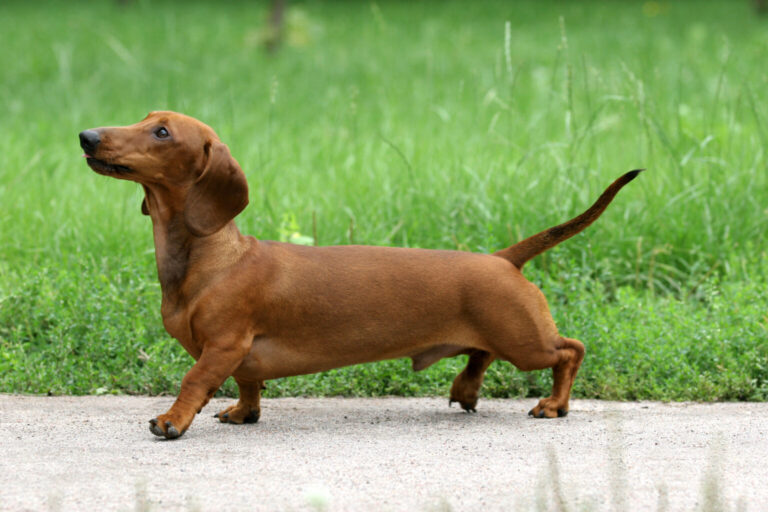
The small size of Dachshunds makes them suitable for the compact living spaces common in Japan, reflecting the Japanese skill in maximizing small spaces efficiently.
Weight

The weight of a Dachshund varies between the standard and miniature sizes. Standard Dachshunds typically weigh between 16 to 32 pounds, while Miniature Dachshunds generally weigh less than 11 pounds. It’s essential to maintain a Dachshund’s weight within a healthy range due to their elongated body structure. Excess weight can lead to severe back problems, including intervertebral disc disease. A balanced diet and regular exercise are vital to manage their weight and ensure their overall well-being.
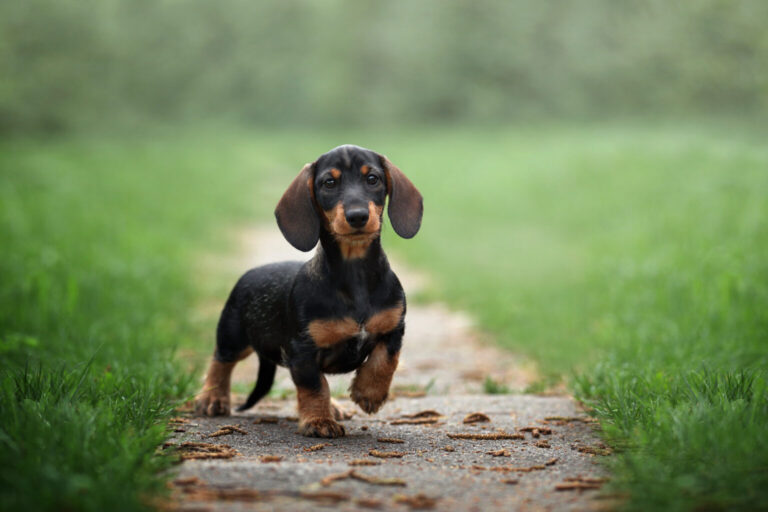
The light weight of Dachshunds aligns with the Japanese preference for smaller, more manageable pets in urban environments.
Lifespan
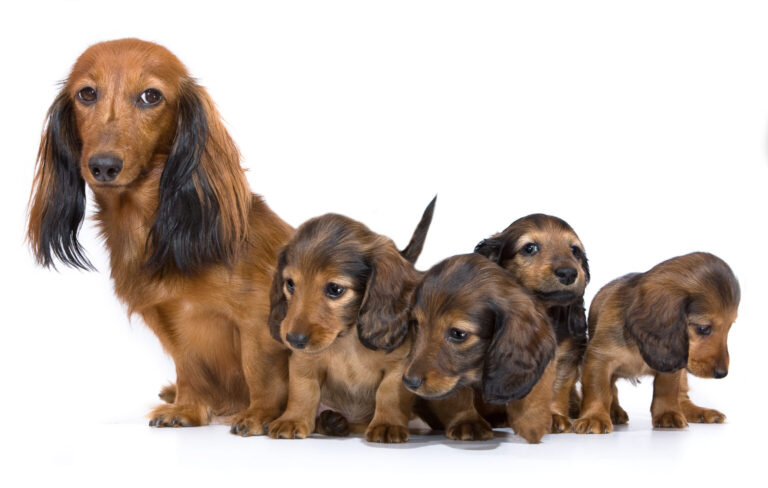
Dachshunds are known for their relatively long lifespan compared to other dog breeds, usually living between 12 to 16 years. Factors that influence their lifespan include genetics, diet, exercise, and the overall quality of care they receive. While smaller dog breeds typically live longer than larger breeds, Dachshunds’ unique body structure requires specific attention to prevent health issues that could impact their longevity. Regular veterinary check-ups and a healthy, active lifestyle are crucial in promoting a long and healthy life for a Dachshund.
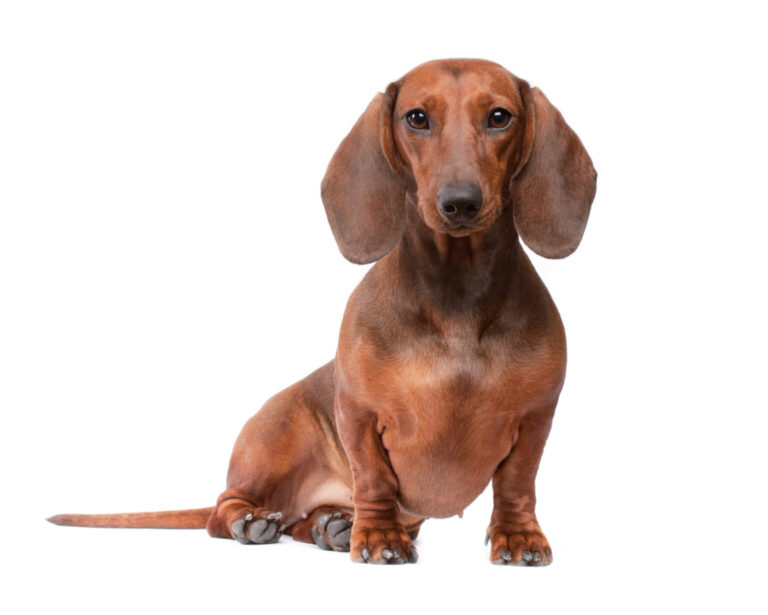
The long lifespan of Dachshunds mirrors the Japanese respect and care for the elderly, emphasizing longevity and health.
Trainability
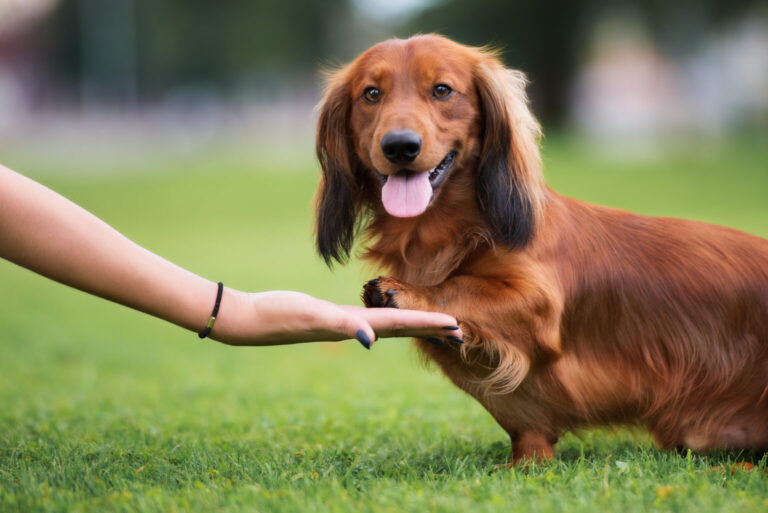
Dachshunds are intelligent and can be quite clever, but they also have a streak of stubbornness, making their trainability a bit challenging. Consistent and patient training is key to teaching them. They respond best to positive reinforcement methods like treats and praise, and they require early socialization to develop a well-rounded temperament. Due to their intelligence, they get bored easily, so keeping training sessions short, engaging, and varied is important.
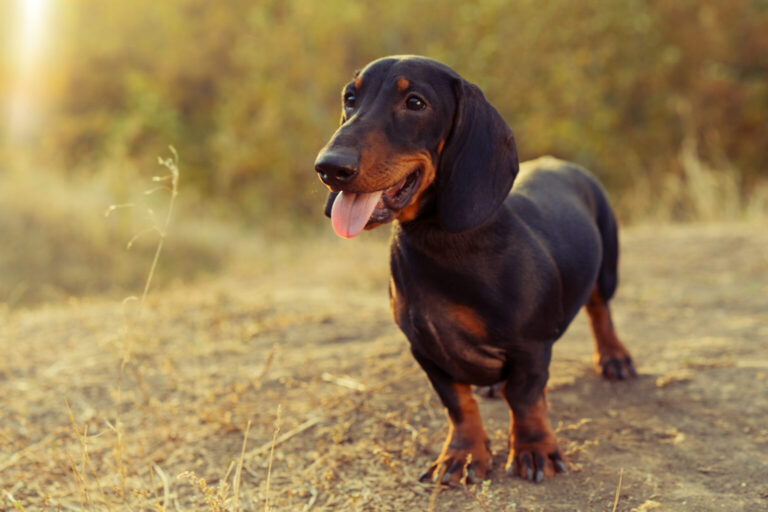
Proper training and socialization are essential in harnessing their intelligence and energy in a positive way.
Exercise
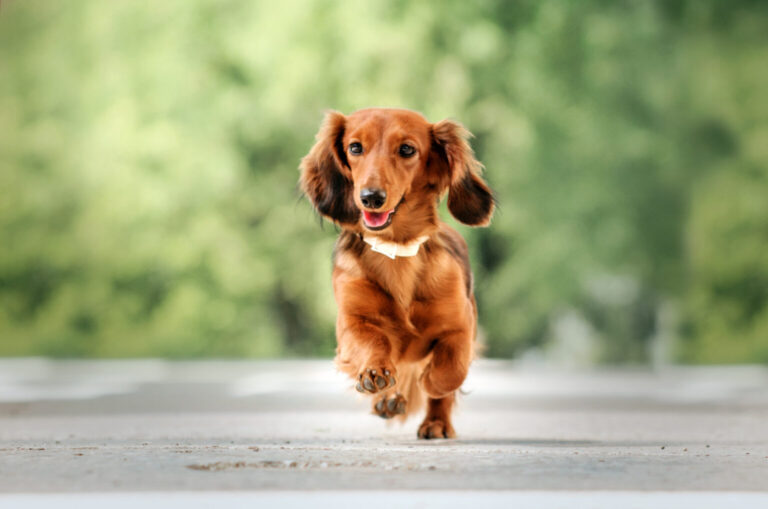
Despite their small size, Dachshunds have a surprising amount of stamina and energy. They require regular exercise to maintain their health and manage their weight.
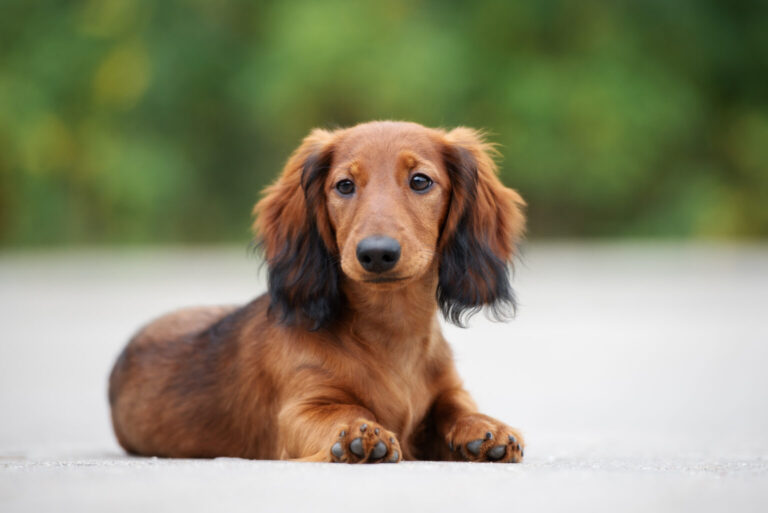
Activities like brisk walks, play sessions, and even participating in dog sports like agility can be beneficial. It’s important to provide them with enough physical activity to prevent obesity and keep them mentally stimulated. However, due to their long backs, it’s crucial to monitor the intensity and type of exercise to prevent any strain or injury.
Feeding

Feeding a Dachshund requires special attention to prevent overfeeding and obesity, which is a common health concern in the breed. A diet of high-quality dog food tailored to their specific age, size, and activity level is crucial. Portion control is important, and treats should be given sparingly. Regular consultations with a veterinarian can help determine the best diet plan, taking into account any specific health needs or dietary restrictions the dog may have.
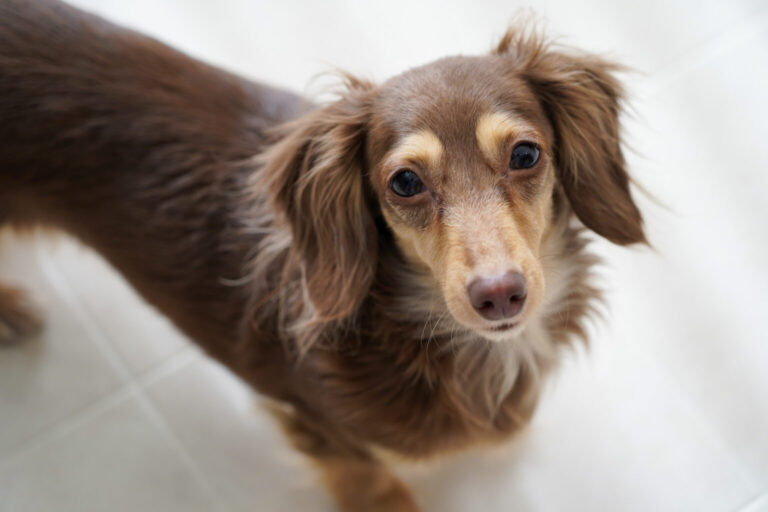
Feeding habits for Dachshunds in Japan often include high-quality, balanced diets, reflecting the Japanese focus on nutrition and health.
Temperament

Dachshunds are known for their bold, curious, and sometimes stubborn nature. They are lively, playful, and can be quite tenacious, which is a remnant of their hunting heritage. They tend to develop strong bonds with their families and can be protective, making them excellent watchdogs. Their tendency to be wary of strangers requires early and consistent socialization to ensure they become well-adjusted adults. Despite their small size, they have a surprisingly loud bark, and they can be quite vocal when they feel the need to alert their family of anything unusual.

The temperament of Dachshunds, being loyal and vigilant, resonates with the Japanese values of loyalty and attentiveness in relationships.
History
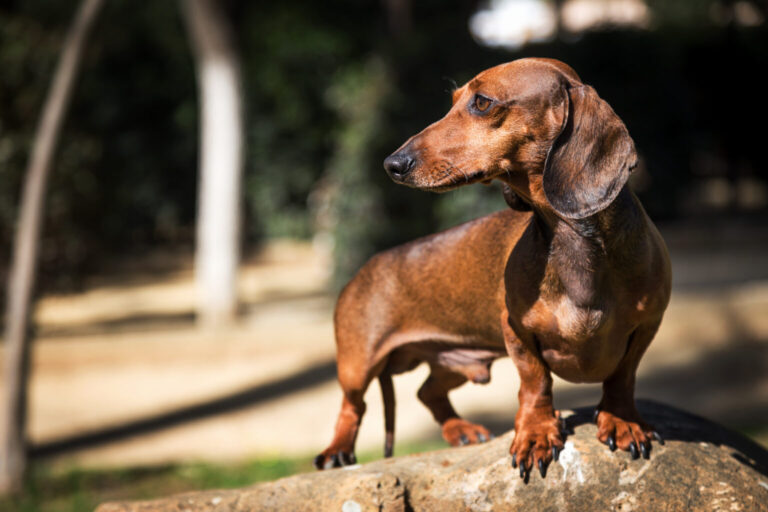
The Dachshund has a fascinating history, originating in Germany several centuries ago as a hunting dog, particularly for badgers. Their distinct long body and short legs were ideal for digging and navigating through burrows. Over time, they transitioned from skilled hunters to beloved companion dogs. Understanding their historical background provides insight into many of their current traits, such as their bravery, determination, and strong sense of smell.
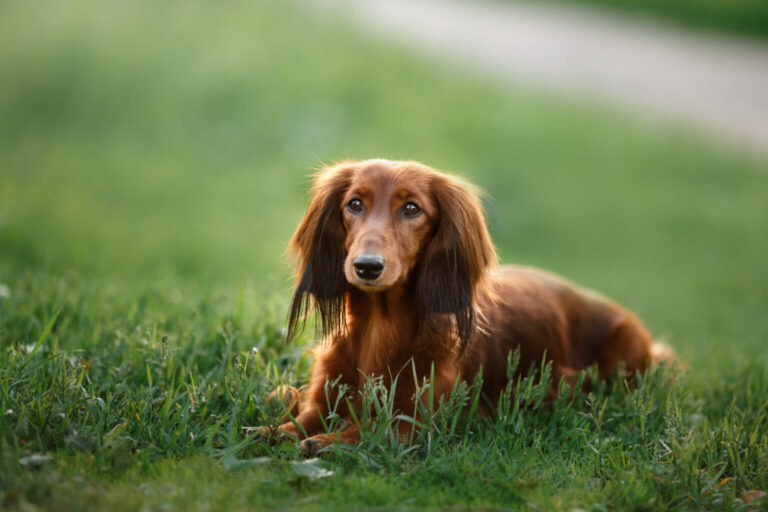
While Dachshunds are not native to Japan, their history in the country reflects the Japanese openness to adopting and integrating foreign elements into their culture.
Grooming

Grooming a Dachshund varies significantly based on their coat type. Smooth-coated Dachshunds are relatively low-maintenance, requiring regular brushing to remove loose hair and occasional baths to keep them clean. Long-haired and wire-haired Dachshunds demand more frequent grooming to maintain their coat’s condition and prevent matting. Along with coat care, regular nail trimming, dental care, and ear cleaning are essential to maintain overall health and prevent common issues like infections.

The grooming needs of Dachshunds, though not extensive, are taken seriously in Japan, reflecting the cultural importance of cleanliness and neatness.
Health

While Dachshunds are generally a healthy breed, they are predisposed to certain health conditions. Their distinctive body shape makes them particularly prone to spinal issues, such as intervertebral disc disease. Other concerns include eye conditions, heart disease, and obesity-related problems. Regular health check-ups, a balanced diet, and appropriate exercise are vital in preventing these issues and ensuring a Dachshund lives a long, healthy life.

Health considerations for Dachshunds are given high priority in Japan, in line with the general Japanese philosophy of preventative care and maintaining well-being.

